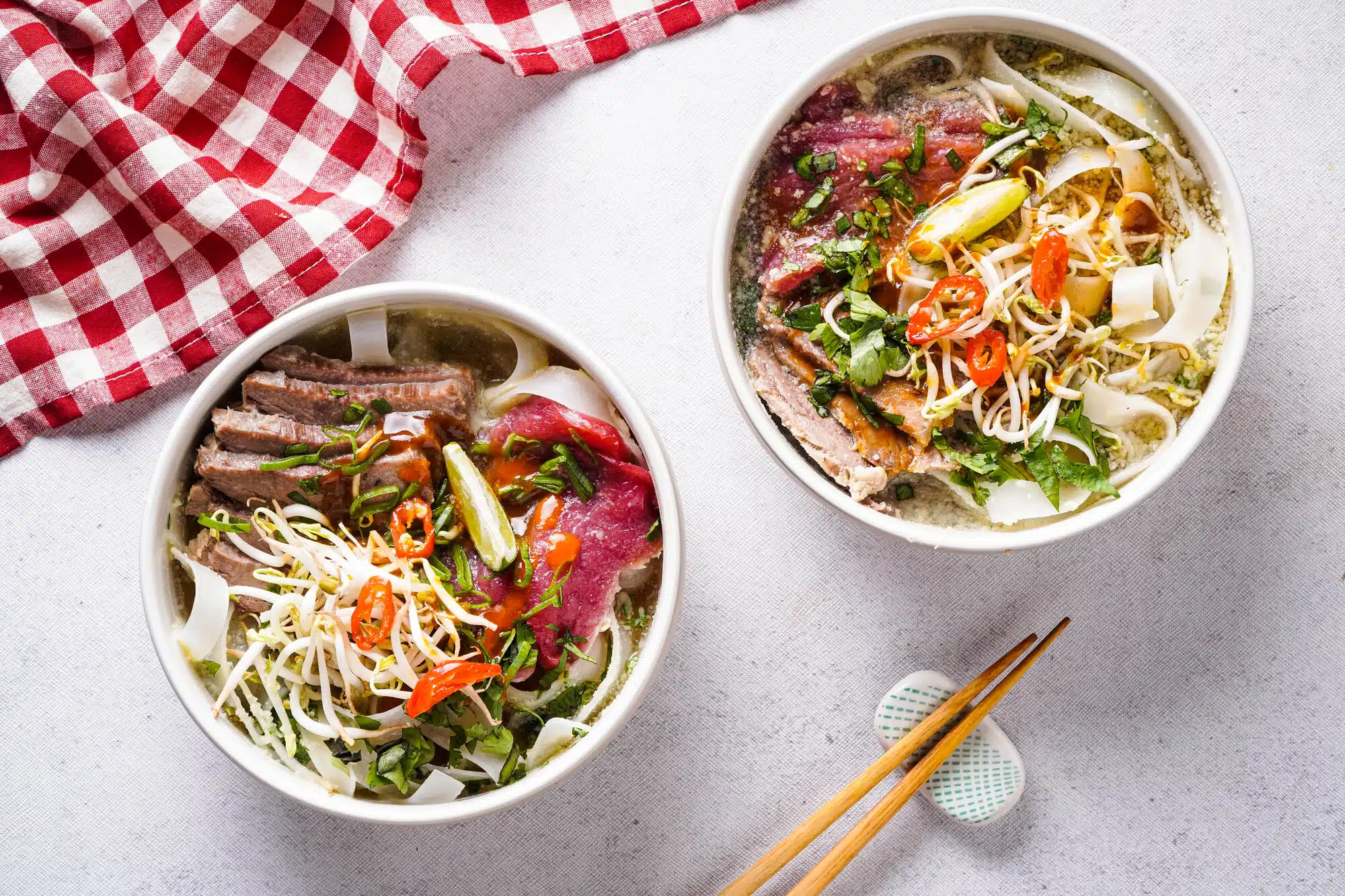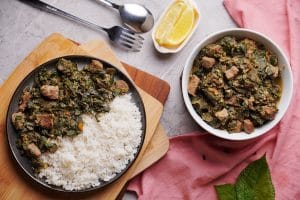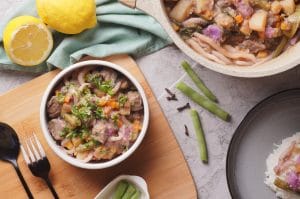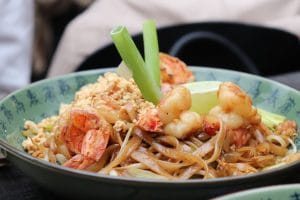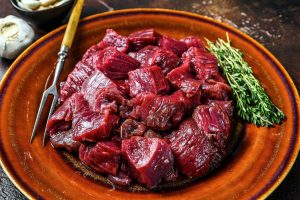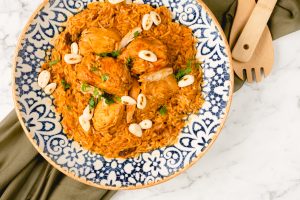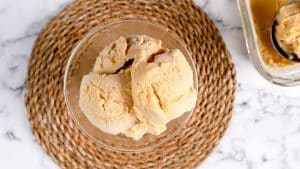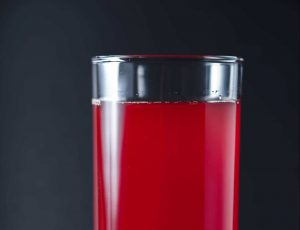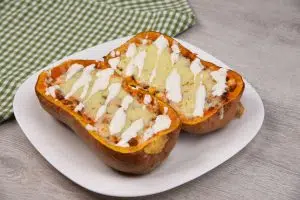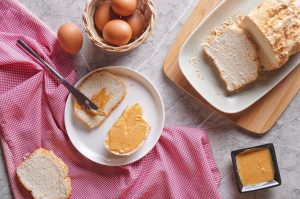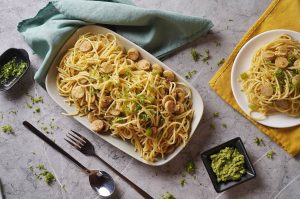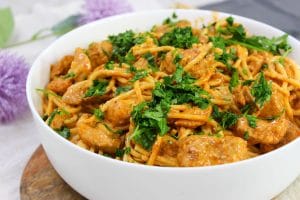Best Vietnamese Beef Brisket Pho
Important Note: When you buy through our links, we may earn a commission. As an Amazon Associate we earn from qualifying purchases. Content, pricing, offers and availability are subject to change at any time - more info.
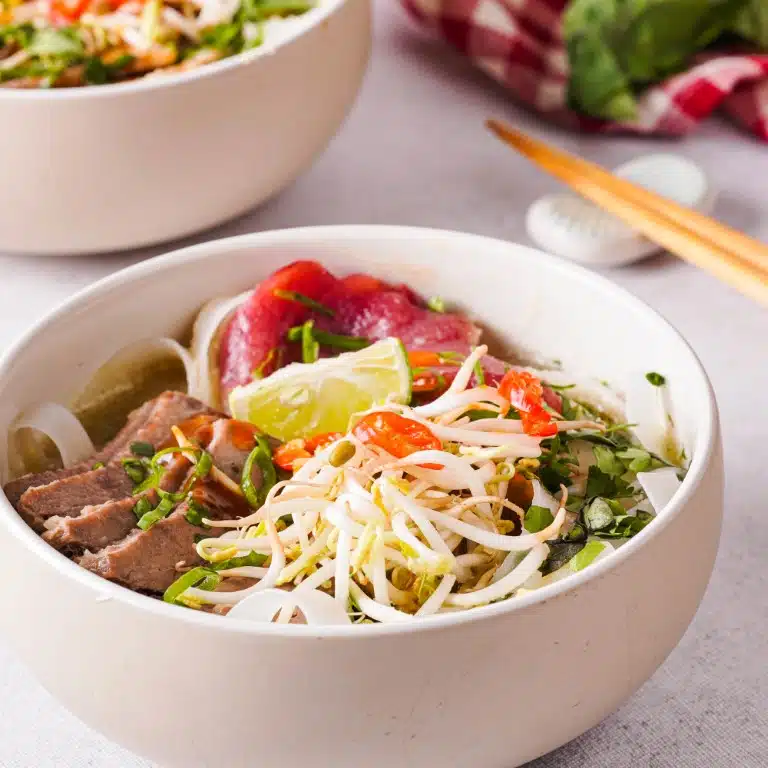
Ingredients
- 3 lbs. beef rib bones
- 4 lbs. beef bones any
- 1 beef brisket about 12 lbs.
- 2 pieces beef tendon
- 3 oz. rock sugar
- 20 liters of water
- 3 Tbsp. salt
- 1 cinnamon stick
- 3 star anise
- 7 cloves
- 1 dried tangerine peel cut into slices
- ½ cup coriander seeds
- 10 g white pepper
- 3 black cardamom
- 1 Tbsp. cumin seeds
- 4 inches of ginger
- 2 medium onions
- Optional: 3 shallots
For the final product:
- 1 lb. boneless beef steak sirloin steak, round eye, or London broil
- 1 bunch bean sprouts
- 1 bunch basil
- 1 bunch fresh coriander
- 2 lbs. Pho rice noodles
- 1 Lime for serving
- 1 Bird’s eye chili optional
- 6 Spring onions
- Hoisin sauce and sriracha optional
Instructions
- In a large pot, boil the beef bones, tendons, and beef brisket in hot water for 20 minutes. Drain and rinse each piece of meat and place it back in the pot.
- Bring the bones and the meat to a boil in about 20 liters of water with rock sugar, and salt. Lower the heat to medium-low and let simmer for 3 hours.
- Meanwhile, char the ginger, onions, and shallots on the stovetop or bake them in the oven for 15 minutes at 375°F. Then bash the ginger and peel and halve the onions. Add ONLY GINGER to the broth.
- After 3 hours, remove the beef brisket from the broth, soak it in cool water for 10 minutes and store it in the fridge, wrapped, for later.
- Simmer the broth for another 5 hours.
- Toast the spices and place in a tea strainer, then place in the broth. Add spices and charred onion and shallots, and simmer for another 1.5 to 2 hours.
- Remove all ingredients from the broth, but save some fat to add later.
- Strain the broth to get a clear and smooth texture. Keep it on a low simmer as you prep the bowls for serving.
- Thinly slice the raw boneless beef steak and the beef brisket.
- Wash and prepare the herbs. Roughly chop the coriander and basil, slice the chili and spring onions, and cut the lime into wedges.
- Submerge serving bowls in hot water and place some Pho noodles in each.
- Top with thin beef slices (both raw steak and beef brisket) and cover with broth. Finish with basil, coriander, bean sprouts, spring onions, chili, optional sriracha and hoisin sauce, and lime wedges on the side for spritzing.
Nutrition
Phở bò is one of the best noodle soups in existence. Learn how to make Vietnamese Southern-style beef brisket pho at home with these easy-to-follow instructions.
Pho consists of broth, rice noodles (Banh pho), herbs, and meat, typically beef or chicken. It’s considered Vietnam’s national dish and pride and it warms the hearts of all. Pho is served everywhere from households to street stalls and restaurants around the country.
There are plenty of shortcut pho recipes out there that don’t give proper instructions. We wanted to share a beef brisket pho recipe with authentic ingredients and instructions with our readers.
Why We Love This Vietnamese Beef Brisket Pho Recipe
This beef brisket pho, also called Phở chin (beef noodle soup with well-done tender meat), uses authentic ingredients and teaches you all the secret cooking methods to get that mouthwatering restaurant-quality pho.
The Vietnamese beef pho broth is infused with bones, meat, an array of spices, onion, and ginger. Everything is left to simmer for a total of 10 hours so that all those amazing flavors seep into the broth. Your kitchen will be smelling like comfort and home.
You don’t have to choose beef vs. brisket pho, this recipe uses both! Traditional beef brisket pho is often served with thinly sliced raw steak as well. We love the slow-cooked spice-infused brisket paired with tender medium-rare beef.
This Vietnamese beef brisket pho recipe is large. You can store leftover broth in the freezer and heat it whenever you want a plate of pho. You’ll never need to order takeout pho ever again. Besides, making authentic pho is time-consuming so cooking a big batch makes sense.
What Are The Ingredients For Vietnamese Beef Brisket Pho?
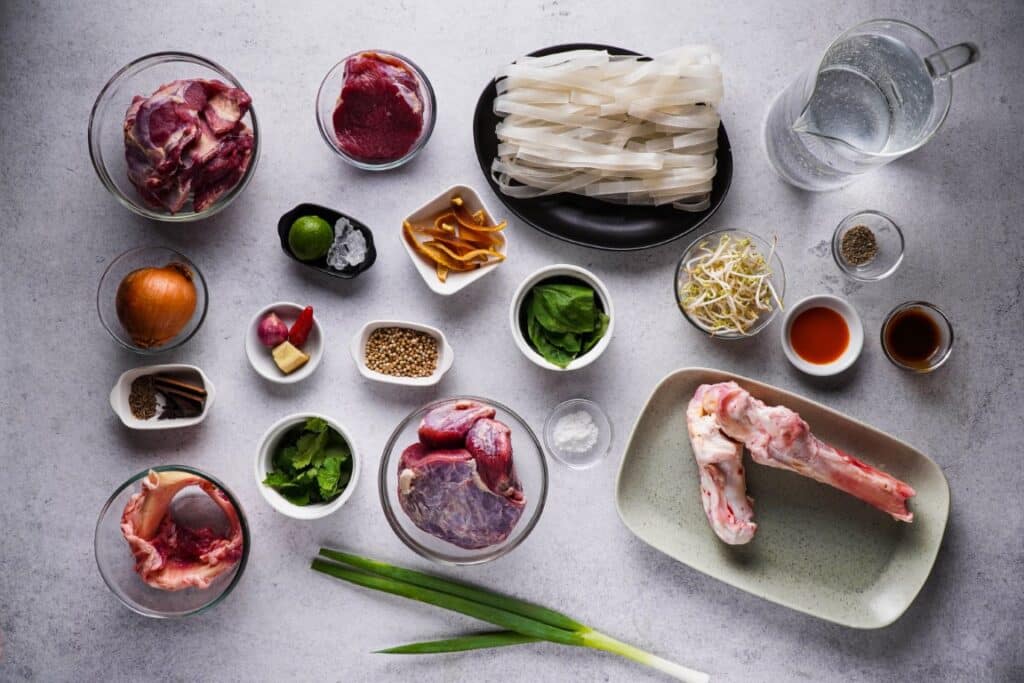
The ingredient list for making authentic beef brisket pho is quite long, but don’t be overwhelmed. The recipe itself is pretty straightforward and mostly requires patience, attention to detail, and a timer.
How To Make Vietnamese Beef Brisket Pho
The biggest job here is making the broth. Once you’ve got that down, assembling a beautiful bowl of pho is easy peasy lime squeezy (because we serve pho with lime wedges, a clever pun, right?).
Step 1: Clean the meat for the broth

Before you start preparing the broth, you want to clean the meat and bones to ensure a smoother flavor.
In a large pot, boil the beef bones, tendons, and beef brisket in hot water for 20 minutes. Drain and rinse each piece of meat to remove any dirt or bacteria.
Place the meat and bones back into the pot and add 20 liters of fresh water.
Step 2: Boil the broth
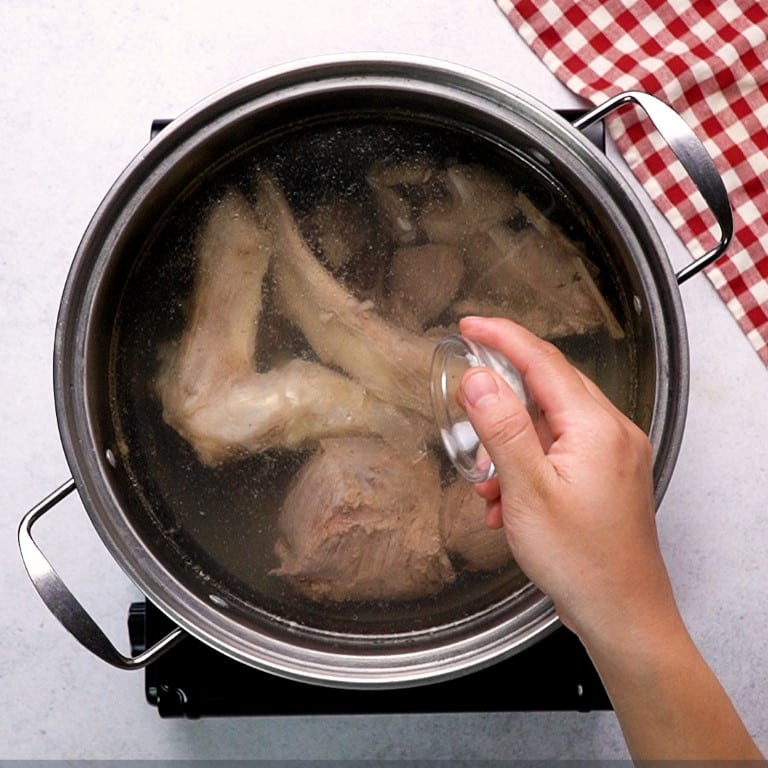
Bring the bones and the meat to a boil and add rock sugar, and salt. Lower the heat to medium-low and let the broth simmer for 3 hours.
Meanwhile, char the ginger, onions, and optional shallots on the stovetop or bake them in the oven for 15 minutes at 375°F. Then bash the ginger and peel and halve the onions. Add ONLY THE GINGER to the broth at this point (in the beginning).
Step 3: Soak the brisket in cool water

After 3 hours, remove the beef brisket from the broth, soak it in cool water for 10 minutes, wrap it and store it in the fridge for later. Let the broth simmer for another 5 hours.
Step 4: Infuse the broth with spices & charred onions

Toast the spices on a non-stick pan without oil until fragrant, and place them in a tea strainer or cheesecloth. Add spices, and charred onions and shallots to the broth and simmer for another 1.5 to 2 hours.
Step 5: Strain the broth

Once the 10 hours are up, turn the heat off and let the broth cool so that the fat layer condenses on the top.
Remove all ingredients from the broth, including the fat layer on top (but leave some fat for taste as some of the compounds that make our food flavorful are fat-soluble).
Strain the broth to get a clear and smooth texture. Heat it on a low simmer as you prep the bowls for serving.
Step 6: Thinly slice the raw beef steak & brisket

Thinly slice the raw boneless beef steak and the beef brisket that was sitting in the fridge. For maximum tenderness, slice the meat against the grain.
Step 7: Prepare the herbs & toppings

Roughly chop the coriander and basil, thinly slice the chili and spring onions, and cut the lime into wedges.
Step 8: Place rice noodles in each bowl

Submerge serving bowls in hot water so that the soup stays hot. Place a serving of rice noodles in each bowl (you don’t need to precook them).
Step 9: Crown the bowl with thin slices of raw steak & beef brisket
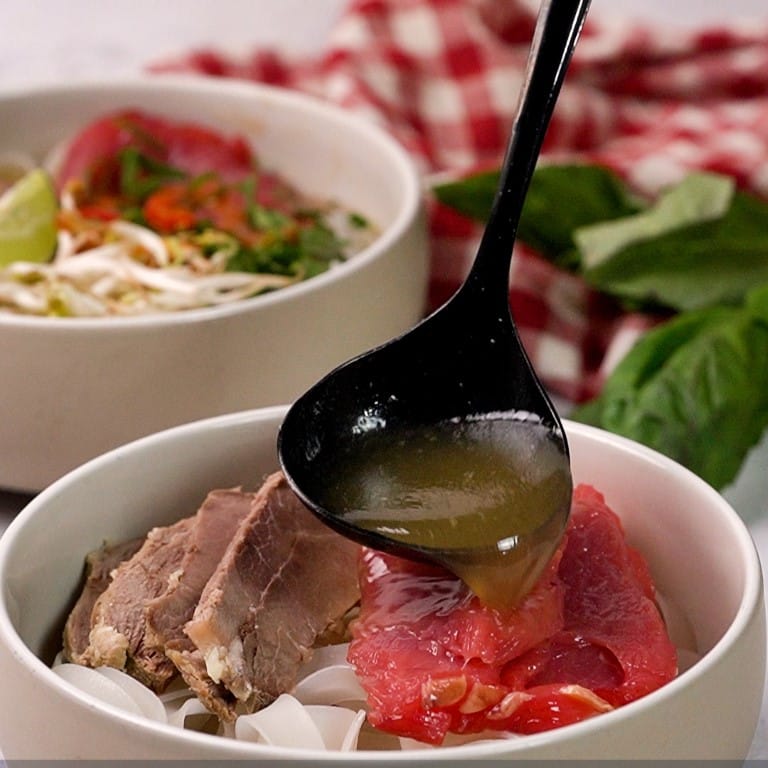
Top with thin beef slices (both raw steak and beef brisket) and cover with broth.
Step 10: Enjoy this Best Vietnamese Beef Brisket Pho in every savory bite!
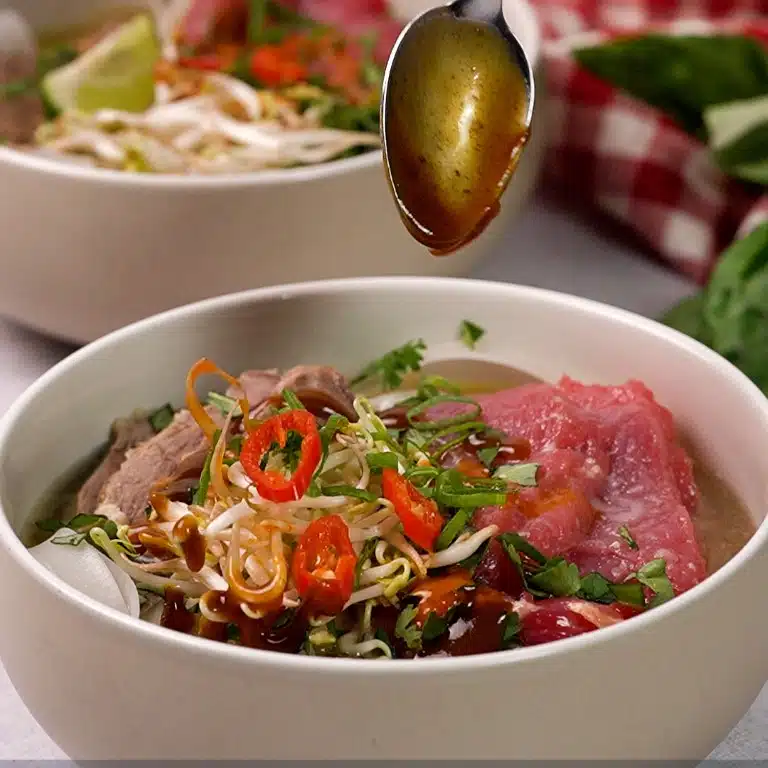
Finish garnishing with basil, coriander, bean sprouts, spring onions, optional sriracha and hoisin sauce, and chili. Serve with lime wedges on the side for spritzing. Enjoy!
Notes & Shortcuts
- When toasting the spices, make sure you don’t burn them. This will ruin the flavor of the broth. Placing them in a tea strainer or cheesecloth is optional, but it will make it easier to remove them from the broth later.
- Don’t precook the pho noodles when assembling the bowls. They will cook quickly in the hot broth.
- Only freeze the broth (once cooled), don’t freeze pho with the rest of the ingredients because they’ll lose their taste and texture. Preparing a bowl of beef pho is easy when you have the broth at hand.
- To achieve a clear and rich broth, simmer it slowly and gently with the lid slightly ajar. I advise simmering the beef bones for a minimum of 6 hours. Do 8 hours or more if you can because it does make a difference.
- Don’t add the onions or the spices in too soon. The onions will get slimy while simmering for too long and the spices will become bitter. Think of how you shouldn’t infuse tea for too long either, it’s kind of the same principle. Add both 1.5 to 2 hours before the end.
- Skim off most of the fat, but don’t throw it all out. Some of the compounds that make our food flavorful are fat-soluble so fat is important for taste.
- Slice your beef thinly and against the grain. Whether you like it well done, rare, or seared, this is the best way to cut it.
- If you want to make a quick version of beef brisket pho, use about 16 liters of ready-made low-sodium beef broth. This is certainly easier than making the Vietnamese beef brisket broth from scratch, but not authentic.
- To make a quick version of beef pho, simmer the beef brisket in the beef broth with the toasted spices, charred ginger and onion, and rock sugar for 1.5 to 2 hours. Remove the beef brisket, cool it in cold water for 10 minutes, and place it in the fridge. Skim the broth for some fat.
- You can add a bit of MSG (monosodium glutamate) when serving the pho for a more takeout-style flavor, but it’s optional. I find that the broth already has plenty of flavors.
Who Made Pho First?
The exact origin and cultural influences of pho are a bit murky; there might have been French colonial influences. But it’s known as a Vietnamese dish nowadays. Pho is even considered to be the national food and pride of Vietnam.
The modern version of pho surfaced between 1900 and 1907 in Northern Vietnam. Two little villages called Vân Cù and Dao Cù (or Giao Cù) in Đông Xuân commune, Nam Trực District, Nam Định Province, are thought to be the traditional home of pho.
Pho is so now popular worldwide thanks to refugees after the Vietnam War. The dish gained success in Paris, and major cities in the United States, Canada, and Australia. The first pho restaurant in the US opened in Little Saigon in Orange County, California, in 1980.
